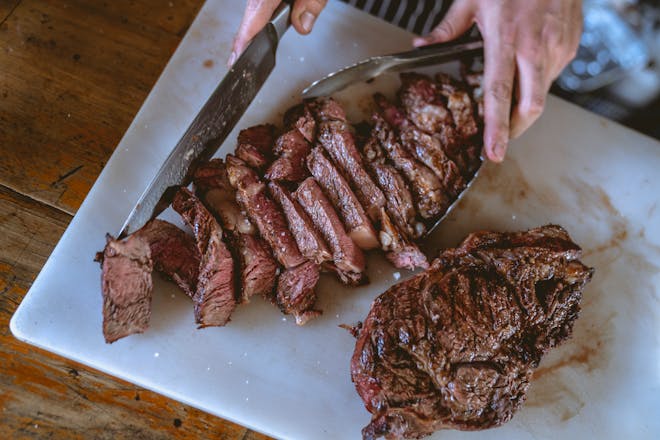Mastering the Reverse Sear Bavette Steak Method
When it comes to cooking a succulent bavette steak, the reverse sear method is a game-changer that guarantees perfectly cooked meat every time. This technique involves slowly roasting the steak and then searing it for a flavorful crust.
The Science Behind the Reverse Sear
The reverse sear is all about control and precision. By gently bringing the steak up to temperature in a low oven or on a cooler part of the grill, you minimize the risk of overcooking and promote an even doneness from edge to edge. When you finally sear the bavette steak at high heat, you create a rich, Maillard-reacted crust that’s the hallmark of a great steak.
Choosing the Right Bavette Steak
Selecting a high-quality bavette, also known as flank steak, is critical. Look for a cut with a bright red color and ample marbling. The bavette should be thick enough to withstand the low and slow reverse sear without drying out. Three-quarters of an inch to an inch is ideal.
Preparing Your Bavette for Reverse Sear
Begin by seasoning your steak. Salt is essential, as it penetrates the meat, enhancing its flavor and helping to tenderize it. You can also add freshly ground black pepper or a spice rub of your choice. Allow the bavette to sit with the seasoning for at least 40 minutes at room temperature. This step not only seasons the steak but also gives it a head start toward reaching the desired internal temperature.
Slow Roasting to Perfection
Preheat your oven or grill to a low temperature—around 225 to 275 degrees Fahrenheit. Place the bavette steak on a rack set over a baking sheet if you’re using an oven, or on the cooler side of the grill if you’re barbecuing. Insert a meat thermometer and cook the steak until it’s about 10-15 degrees below your target final temperature. For a medium-rare finish, this would be around 115 to 120 degrees Fahrenheit.
Pro Tip: Use a remote thermometer to monitor the steak’s temperature without having to open the oven or grill, which can cause heat fluctuations.
Searing for the Ultimate Crust
Once your bavette reaches the desired pre-sear temperature, it’s time for the dramatic finale. Heat a cast-iron skillet or grill to its highest setting. If using a skillet, add a high-smoke-point oil just before the steak. Sear the steak for 1 to 2 minutes on each side, until you achieve a deep, caramelized crust. Be sure to sear the edges as well for a uniform finish.
Rest and Serve: After searing, let your bavette steak rest for about 10 minutes. This allows the juices to redistribute throughout the meat, ensuring each bite is as juicy and flavorful as the last. Slice against the grain and serve immediately.
Additional Tips for the Perfect Bavette Steak
While the reverse sear is straightforward, here are a few extra tips to help you master the technique:
- Patience is Key: Don’t rush the initial low-temperature cooking phase. The slower the rise in internal temperature, the more even the doneness will be.
- Avoid Overcrowding: When searing, make sure the steak has plenty of space. Crowding can lead to steaming instead of searing.
- Use Compound Butter: As you let the steak rest, top it with a slice of compound butter for an additional layer of richness and flavor.
With practice and attention to detail, the reverse sear method will elevate your bavette steak to new culinary heights. Enjoy the process and the delicious results!
